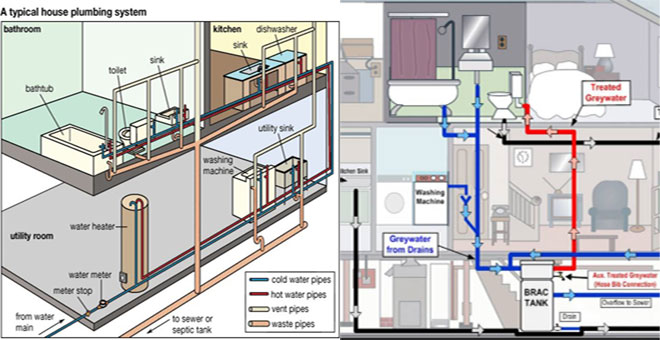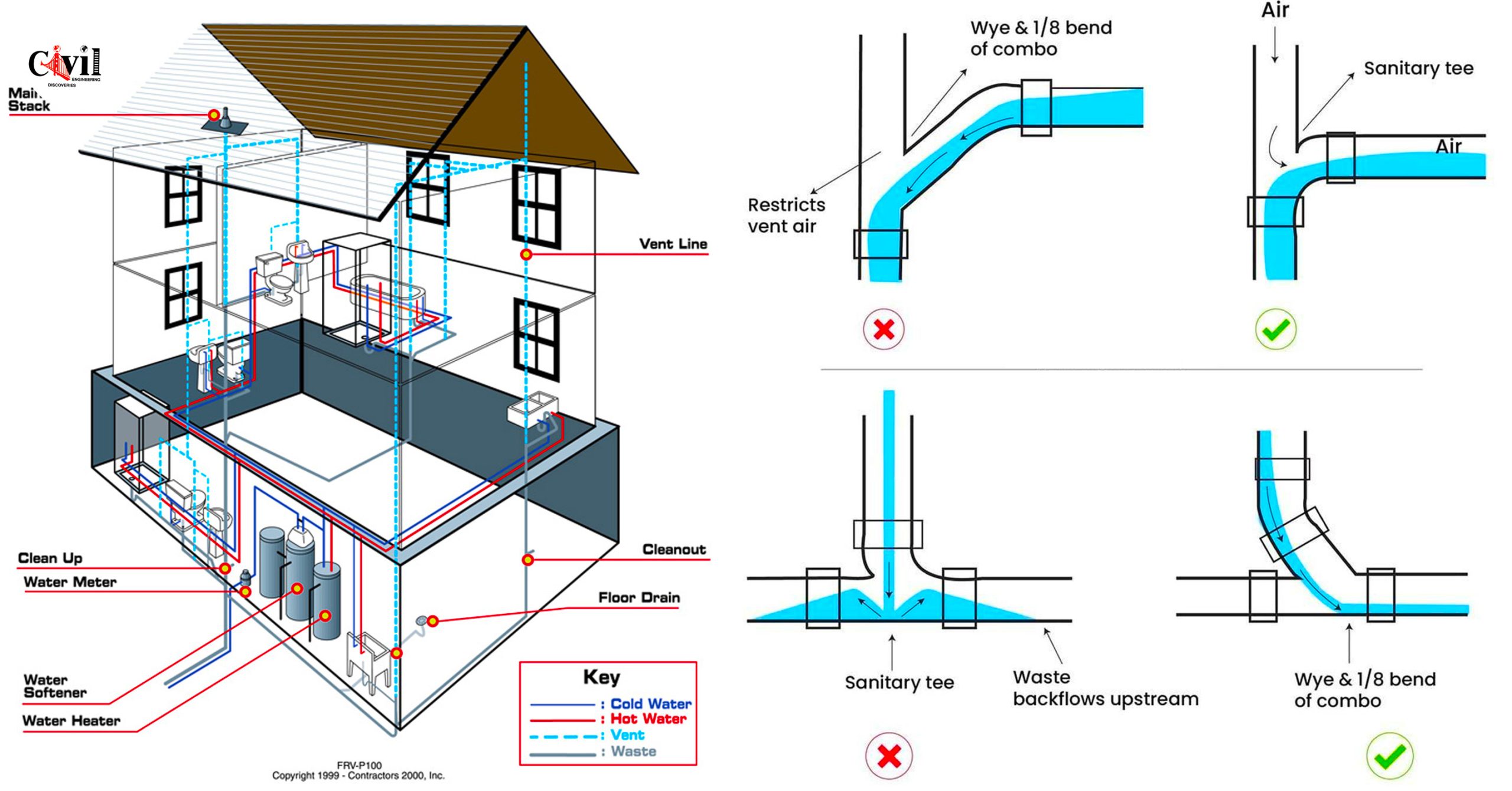The article author is making a number of good observations on the subject of Exploring Your Homes Plumbing Anatomy as a whole in this content below.

Understanding just how your home's plumbing system functions is vital for every home owner. From supplying tidy water for alcohol consumption, food preparation, and bathing to safely removing wastewater, a well-maintained pipes system is vital for your family's health and wellness and comfort. In this detailed guide, we'll check out the intricate network that comprises your home's plumbing and offer pointers on maintenance, upgrades, and dealing with common issues.
Intro
Your home's plumbing system is more than just a network of pipelines; it's a complicated system that ensures you have accessibility to clean water and reliable wastewater removal. Recognizing its components and just how they collaborate can help you prevent pricey repair work and make certain everything runs efficiently.
Basic Elements of a Plumbing System
Pipelines and Tubing
At the heart of your pipes system are the pipes and tubes that carry water throughout your home. These can be constructed from various products such as copper, PVC, or PEX, each with its advantages in regards to durability and cost-effectiveness.
Fixtures: Sinks, Toilets, Showers, and so on.
Components like sinks, toilets, showers, and tubs are where water is made use of in your house. Understanding exactly how these fixtures link to the pipes system assists in detecting problems and intending upgrades.
Valves and Shut-off Points
Shutoffs regulate the flow of water in your pipes system. Shut-off shutoffs are essential throughout emergencies or when you need to make fixings, allowing you to separate parts of the system without interrupting water circulation to the entire home.
Water System
Main Water Line
The primary water line attaches your home to the municipal water system or an exclusive well. It's where water enters your home and is distributed to various fixtures.
Water Meter and Stress Regulator
The water meter steps your water use, while a stress regulator guarantees that water streams at a secure pressure throughout your home's plumbing system, stopping damages to pipes and components.
Cold Water vs. Warm water Lines
Understanding the difference in between cold water lines, which provide water straight from the major, and hot water lines, which bring heated water from the hot water heater, assists in fixing and planning for upgrades.
Drain System
Drain Pipes Piping and Traps
Drain pipelines lug wastewater away from sinks, showers, and toilets to the drain or septic system. Catches prevent sewer gases from entering your home and also trap debris that might trigger obstructions.
Air flow Pipelines
Air flow pipes permit air right into the drainage system, preventing suction that could slow water drainage and create traps to vacant. Correct air flow is crucial for keeping the stability of your pipes system.
Relevance of Correct Water Drainage
Making certain correct water drainage protects against back-ups and water damages. Routinely cleaning up drains and preserving traps can prevent pricey repair services and prolong the life of your plumbing system.
Water Heating System
Sorts Of Hot Water Heater
Hot water heater can be tankless or standard tank-style. Tankless heaters warmth water as needed, while storage tanks store warmed water for prompt usage.
Updating Your Plumbing System
Reasons for Upgrading
Updating to water-efficient components or changing old pipes can enhance water quality, reduce water costs, and enhance the value of your home.
Modern Pipes Technologies and Their Advantages
Check out innovations like smart leak detectors, water-saving bathrooms, and energy-efficient water heaters that can save cash and minimize environmental influence.
Expense Considerations and ROI
Compute the in advance expenses versus long-term financial savings when taking into consideration pipes upgrades. Numerous upgrades spend for themselves with reduced energy expenses and fewer fixings.
Exactly How Water Heaters Attach to the Pipes System
Comprehending how hot water heater link to both the cold water supply and hot water circulation lines assists in diagnosing concerns like insufficient hot water or leaks.
Upkeep Tips for Water Heaters
Frequently flushing your hot water heater to remove debris, inspecting the temperature setups, and examining for leakages can extend its life-span and improve energy efficiency.
Usual Plumbing Concerns
Leaks and Their Reasons
Leaks can happen due to maturing pipelines, loose installations, or high water stress. Dealing with leakages immediately avoids water damages and mold growth.
Blockages and Blockages
Blockages in drains pipes and bathrooms are often triggered by purging non-flushable products or a build-up of oil and hair. Utilizing drainpipe screens and bearing in mind what decreases your drains can protect against blockages.
Signs of Pipes Problems to Look For
Low tide pressure, sluggish drains pipes, foul odors, or unusually high water expenses are indicators of potential plumbing issues that need to be attended to promptly.
Plumbing Upkeep Tips
Routine Examinations and Checks
Arrange yearly plumbing examinations to catch concerns early. Search for indicators of leaks, deterioration, or mineral buildup in taps and showerheads.
Do It Yourself Maintenance Tasks
Basic tasks like cleaning tap aerators, checking for commode leaks utilizing color tablets, or protecting revealed pipes in chilly environments can prevent significant pipes issues.
When to Call a Professional Plumbing
Know when a pipes issue needs specialist knowledge. Trying intricate repairs without appropriate understanding can cause even more damages and higher repair service prices.
Tips for Lowering Water Usage
Basic routines like dealing with leaks promptly, taking shorter showers, and running full tons of washing and recipes can conserve water and lower your energy costs.
Eco-Friendly Plumbing Options
Consider sustainable pipes products like bamboo for floor covering, which is durable and environmentally friendly, or recycled glass for countertops.
Emergency Readiness
Actions to Take Throughout a Plumbing Emergency
Know where your shut-off valves are located and how to turn off the supply of water in case of a ruptured pipe or major leak.
Importance of Having Emergency Contacts Handy
Maintain call info for regional plumbings or emergency services conveniently offered for fast reaction during a pipes situation.
Ecological Effect and Conservation
Water-Saving Fixtures and Home Appliances
Mounting low-flow taps, showerheads, and commodes can substantially lower water usage without compromising performance.
DIY Emergency Fixes (When Appropriate).
Short-term fixes like using duct tape to patch a leaking pipeline or positioning a pail under a trickling faucet can reduce damage until a professional plumber arrives.
Verdict.
Recognizing the makeup of your home's pipes system equips you to maintain it effectively, conserving money and time on repair services. By complying with regular upkeep regimens and remaining notified regarding modern-day plumbing innovations, you can ensure your plumbing system operates successfully for many years to come.
Understanding Your Home Plumbing System: A Comprehensive Guide
Plumbing System: The Lifeline of Your Home
At its core, the plumbing system is designed to perform two primary functions: bring fresh water into your home and remove wastewater. The system is a network of pipes, fixtures, and other components that transport water and sewage. Residential plumbing systems include potable water supply lines, drain-waste-vent (DWV) systems, and various plumbing fixtures that make water use in daily tasks possible.
Key Components:
Water Supply: This part of your plumbing system brings municipal water into your home, passing through the main water supply line. It s responsible for supplying all water needs, from drinking to bathing.
Drainage System: It carries waste and water away from your home to the sewer or septic system. This system includes all the piping within your home that leads to external sewage or septic systems.
Vent System: An essential yet often overlooked component, the vent system allows sewer gases to escape and lets air into the drainpipes, ensuring water and waste move correctly through the system.
Fixture: More Than Just Taps and Toilets
Plumbing fixtures are the most interactive parts of the plumbing system, including faucets, showers, toilets, and sinks. Each fixture is connected to the plumbing system and plays a role in either the delivery of freshwater or the disposal of waste and wastewater.
Types of Fixtures:
Faucets and Sinks: Used for washing hands, dishes, and other daily water needs. Toilets: Dispose of human waste through the sewage system. Bathtubs and Showers: Provide bathing facilities, requiring both hot and cold water supply. Water Supply: The Source of Life
The water supply system is a critical component, ensuring that potable water is available throughout your home for various uses, including drinking, cooking, and cleaning. This system consists of pipes that distribute water to different parts of the house, controlled by valves to regulate the water flow.
Types of Plumbing: Materials and Methods
Various types of plumbing systems and materials are used in residential settings, each with its advantages and applications. From copper and PVC pipes for water supply to cast iron and ABS for drainage, the choice of materials can impact the longevity and efficiency of your plumbing system.
https://intownplumbingtx.com/articles/home-plumbing-system-guide/

I ran across that page on The Inner Workings of Your Home's Plumbing when perusing the web. Liked our piece of writing? Please share it. Help somebody else check it out. I appreciate reading our article about The Inner Workings of Your Home's Plumbing.
Visit Site